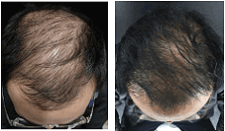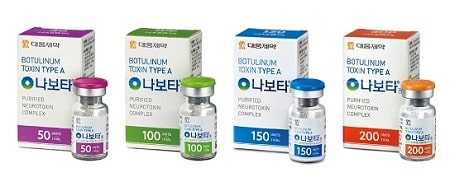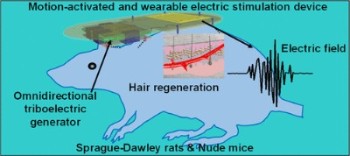For several years, I have thought about writing a post on Botox and hair growth. A few sources have in the past suggested that the Botulinum toxin (which is what Botox is made from) can grow hair.
Update: An August 2023 study from Egypt finds that botulinum toxin A (BTA) for the treatment of androgenetic alopecia (AGA) is effective in both male and female patients.
Update: An August 2022 study from China finds that a single intradermal injection of Botulinum Toxin A effectively reduced scalp sebum secretion and greasiness. Many balding people complain of this common scalp problem.

Update: An August 2020 study from China concluded that Botulinum toxin type A (BTA) was safe and effective at growing hair. Some of their before and 12 months after Botox photos of hair growth are impressive. 30 sites on each patient’s site were injected with 100 U of BTA. The patients received further BTA injections every three months for a total of four sessions.
Update: An April 2020 study from South Korea concludes that intradermal injection of botulinum toxin could be a possible treatment option for androgenetic alopecia. It is likely working by inhibiting TGF-β1 secretion from hair follicles.
Botox is a multifaceted magic-like poison with numerous potential approved uses as of 2019. It is no longer solely a product to reduce wrinkles.
Even if you are extremely skeptical, do remember that there is some scientific evidence that surprising procedures such as mechanotherapy and scalp exercises can benefit hair growth; as can dermarolling and microneedling; as can the ill advised ligature of arteries.
September 27, 2019
Botulinum Toxin for Hair Loss

Research and evidence to date on the subject of Botox and hair growth have been scant. However, reader “Alek” posted an interesting new article from South Korea regarding the testing of botulinum toxin Nabota brand for hair loss on male patients with androgenetic alopecia. This brand is manufactured by Daewoong Pharmaceutical.
The Phase II-b trial will entail 180 units of the toxin delivered via 6 injections to the scalp once per month. It will be led by Dr. Park Byung-cheol, a professor of dermatology at Dangook University Hospital. Note that the less costly Nabota only hit the US market in 2019, and is facing a lawsuit from Botox manufacturer Allergan.
Botox vs Botulinum vs Botulism
It should be noted that the capitalized BOTOX® is a brand name (or trade name) for Botulinum toxin. The latter is a neurotoxic protein produced by the bacterium Clostridium Botulinum. “BOTOX®” is a trademark of Allergen (Ireland). Botulism is a serious, albeit rare, paralytic food poison illness caused by the Botulinum toxin.
Botox is classified as Botulinum Toxin Type A (BTX-A), the most popular variety. Botulinum Type B (BTX-B) received FDA approval for treatment of cervical dystonia in the US in December 2000. The main Botox Type B product sold in the US is Myobloc (known as NeuroBloc in the EU). The scientific name for Myobloc is rimabotulinumtoxinB.
Botox and Hair Growth
In 2010, an interesting study from Canada found Botox injection to the scalp to be successful in growing new hair in 40 test patients. The authors postulated an interesting theory as to why BTX-A succeeded so well in growing hair. The injections induce scalp muscle paralysis, which in turn:
“Enhances blood flow to the scalp by reducing the tension on the scalp skin. Because the conversion to dihydrotestosterone (DHT) is enhanced in a low-oxygen environment, oxygenated blood reduces this conversion and increases conversion to estradiol.”
In 2017, an article in Vogue magazine had an encouraging quote from dermatologist Dr. Dendy Engelman:
“Preliminary studies for Botox in the scalp are showing that 50 percent of patients are growing new hair.”

Also in 2017, a study from India found that 8 of 10 male patients with androgenetic alopecia who were treated with Botox injections ended up with good to excellent results. The before and after image on the right is of one of the excellent responders to the Botox treatment.
Other Brands of BTX-A
Besides Allergen, other companies also product their version of Botulinum.
- Companies in Western Europe produce the well known brands Dysport and Xeomin.
- In South Korea, BTX-A is produced under the names Botulax, Innotox, Meditoxin (Neuronox) and Nabota.
- In Russia, Botulinum toxin is sold as Relatox.
- China also produces various strains of BTX-A.
Botox is technically known as onabotulinumtoxinA; Dysport is known as abobotulinumtoxinA; and Xeomin is known as incobotulinumtoxinA.
